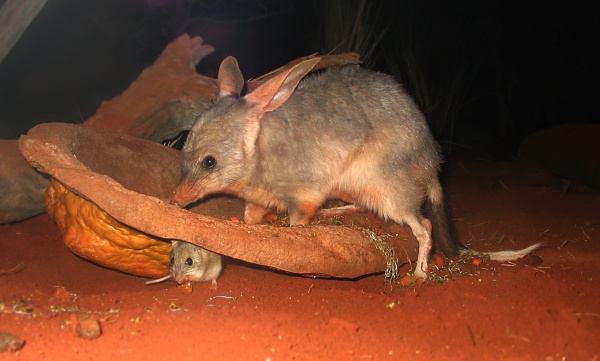Facts About Greater bilby
The greater bilby, often simply referred to as the bilby, is a captivating nocturnal marsupial native to Australia. Also known by names such as dalgyte, pinkie, and rabbit-eared bandicoot, bilbies thrive in the arid regions of northwestern and central Australia, where spinifex grass and acacia shrubs dominate the landscape. These endearing animals are easily identifiable by their long ears, bandicoot-like snouts, and soft fur, which is a blend of blue-gray and tan hues.
Bilbies are adept burrowers, creating intricate tunnel systems that serve as their homes and hideouts. As omnivores, they have a diverse diet that includes insects, seeds, fruits, and small animals. Remarkably, they do not need to drink water, as they obtain all the moisture they need from their food. Female bilbies have a short gestation period and can breed throughout the year, typically giving birth to one to three joeys at a time.
These marsupials are generally solitary, with females playing the primary role in caring for their young. Unfortunately, bilbies face significant threats from habitat destruction, competition with other animals, and predators like feral cats and foxes. To combat these challenges, conservationists are striving through captive breeding programs, population monitoring, and reintroduction efforts. These initiatives have seen some success, with bilbies being reintroduced into various sanctuaries and reserves across Australia.
Scientifically known as Macrotis lagotis, the bilby's name is derived from the Yuwaalaraay Aboriginal language, where it means "long-nosed rat." To support the protection of these unique creatures, events like National Bilby Day are organized to raise awareness and funds for conservation efforts. Through these initiatives, there is hope that the greater bilby will continue to be a cherished part of Australia's rich wildlife heritage.
